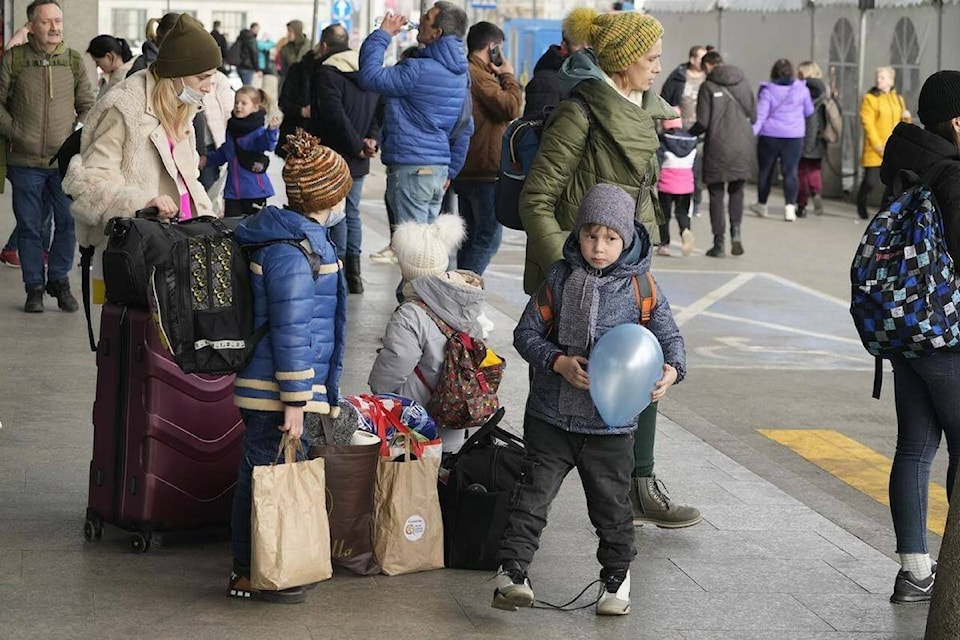by Randy Janzen
In the past month we have been inundated with reports of human tragedy from Ukraine: forced displacement, streams of refugees, mass killings and destroyed cities. It is natural that we feel compelled to get involved, to want to do something, anything. The Russian invasion of Ukraine has captured our attention in ways that other recent mass humanitarian tragedies have not, stirring up a collective call to action. This situation highlights our connection to others and requires us to thoughtfully reflect on how we can best help to reduce the human suffering.
The question asked is: what is our goal and how do we best respond? If our goal is to reduce human suffering and to end the violence, our response needs to be based on strong evidence and best practices. What works best?

Our historical patterns tend to look like this: try negotiation and political pressure and if that doesn’t work, we escalate to war. Large-scale nonviolent resistance has never captured our mainstream attention. Historically, when we talk about nonviolent resistance, we think of people who, although well-intentioned, were naïve or if successful, were dealing with different realities. However, we now have research to demonstrate the effectiveness of nonviolent resistance in midst of provoked large scale military aggression. In the comprehensive study of hundreds of struggles over the past century, the result is clear: nonviolent responses are more effective in achieving political goals and reducing human suffering. What does nonviolent resistance look like for Ukraine? Here are three suggestions.
Firstly, networks of activists engaging in nonviolent resistance already exist in both Ukraine and Russia. Our response should be to support them at the same level that we have historically supported armies. Civilian noncooperation is highly effective, but these campaigns need funding, organization, and planning. Research has demonstrated that a key to success of any campaign is size. Nonviolent campaigns do a much better job at attracting critical masses, whereas violent insurgencies do not. In Russia, networks are engaging in acts of resistance, education, and solidarity. In Ukraine, networks are engaging in innovative and effective resistance strategies to stop the violence. Nonviolent resistance has encouraged mass defection of military (as seen in the overthrow in Serbia) and interrupted cycles of violence.
Secondly, the implementation of boycott, divestment, and sanctions of Russia by our governments and businesses is necessary to dry up the resources needed to fuel Putin’s army. There has been a great deal of uptake on this point, but not surprisingly, many countries are still purchasing Russian oil.
Thirdly, sending skilled unarmed civilian peacekeepers can protect civilian populations by working on the ground in early warning/early response systems, creating safe zones and accompanying vulnerable groups. This is already happening around the world in more than 20 regions, where local and international personnel work collaboratively to reduce civilian deaths. Research has shown that unarmed civilian peacekeepers, despite being deployed in volatile situations, are 12 times less likely to be killed than their conventional armed counterparts, attesting to the effectiveness of their work in breaking cycles of violence.
Reflecting on how to best respond to the Ukraine crisis also highlights four problems of responding with military aid. First, research shows us that when third-party military missions (such as NATO) join, violence escalates, and civilian deaths escalate – by as much as 40 percent. Secondly, conventional military aid is unsustainable from an environmental perspective – so much so that Canada (among many other countries) has exempted its military from its own Carbon emissions targets. Thirdly, history shows us that despotic leaders such as Putin do not back down to military foes, and thus the threat of nuclear war is real. Finally, supporting foreign armies in recent years has led to large amounts of arsenal ending up in the “wrong hands” (such as occurred with NATO in Libya), leading to further instability and violence against civilians.
Our decision on how to respond has repercussions that go beyond the immediate. If we measure long term success of nonviolent resistance, we also find that it is more effective in terms of economic recovery and the longevity of democracy. Additionally, we should be planning not only for the immediate crisis in Ukraine, but also for the other ongoing humanitarian crises, and for future ones, as large-scale conflicts are not going away. We not only have the resources to save countless lives, we also have the knowledge and expertise to help us respond in the best way possible. Knowledge is power and this has never been more apt than in the midst of this war.
Randy Janzen is a retired instructor in Peace and Justice Studies at Selkirk College.
